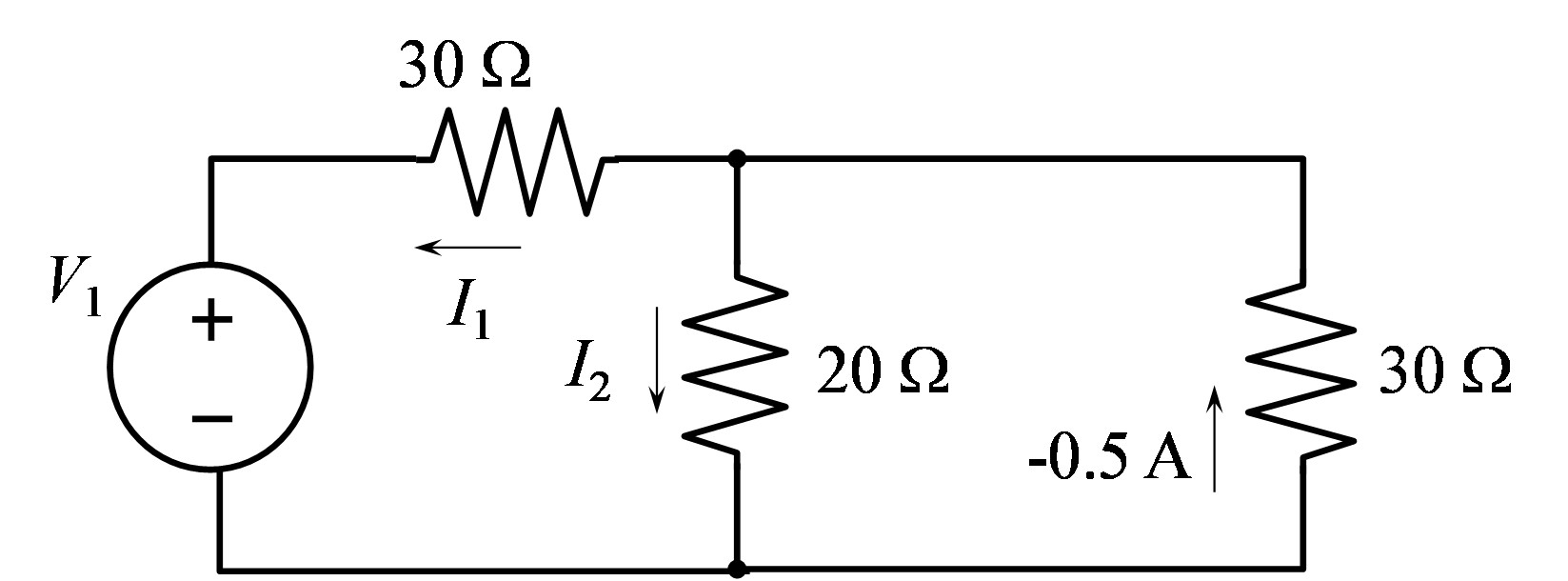EGR203 Electric/Electronic Circuits Assignment 1 (a)
- Use KCL to determine the unknown currents I2 and I5 in the circuit below.
Assume I0 = -2 A, I1 = -4 A,
IS = 8 A, and VS = 12 V. (Rizzoni 2.13)
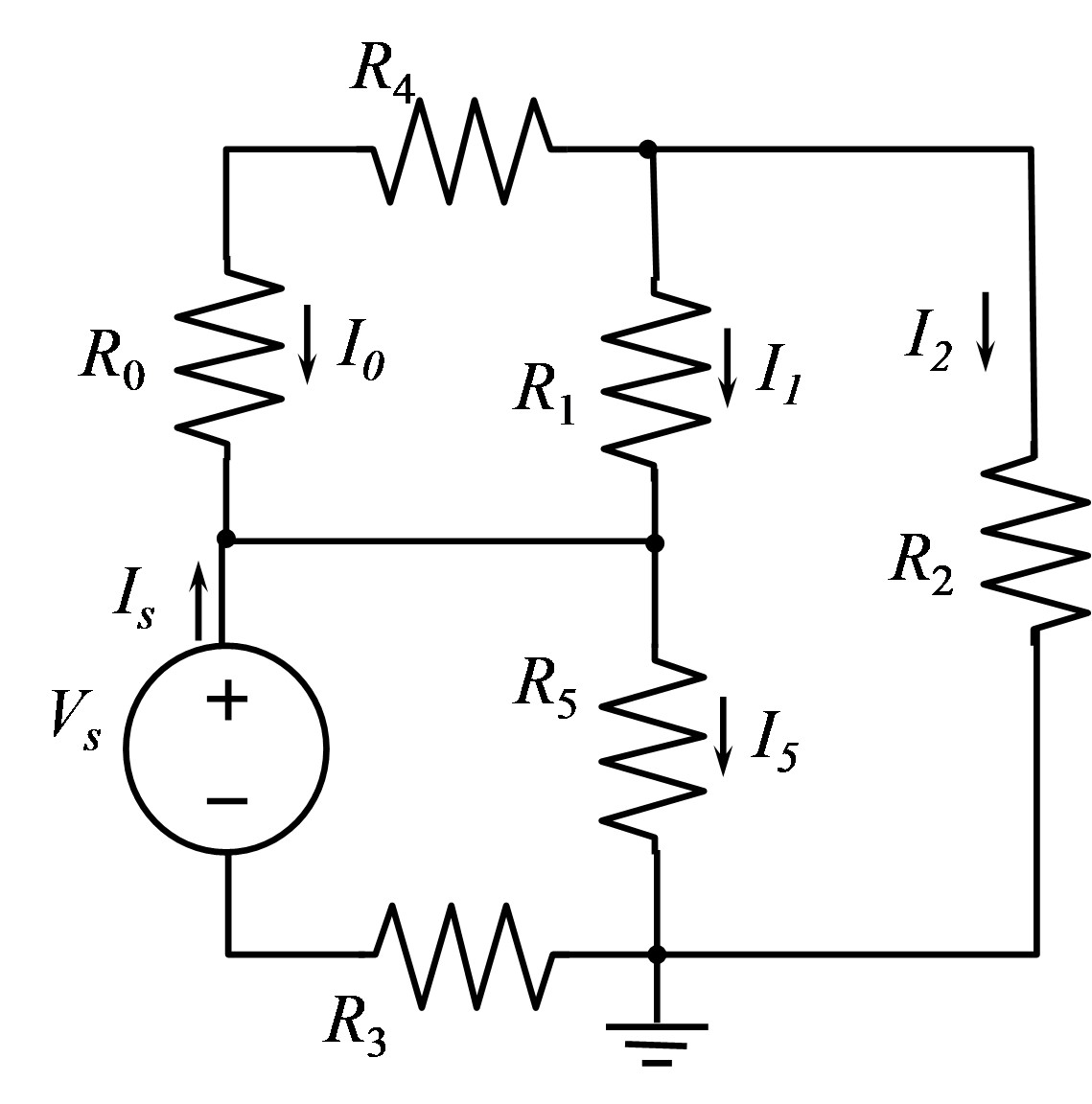
- Apply KVL to find V1 and V2
in the circuit below. (Rizzoni 2.16)
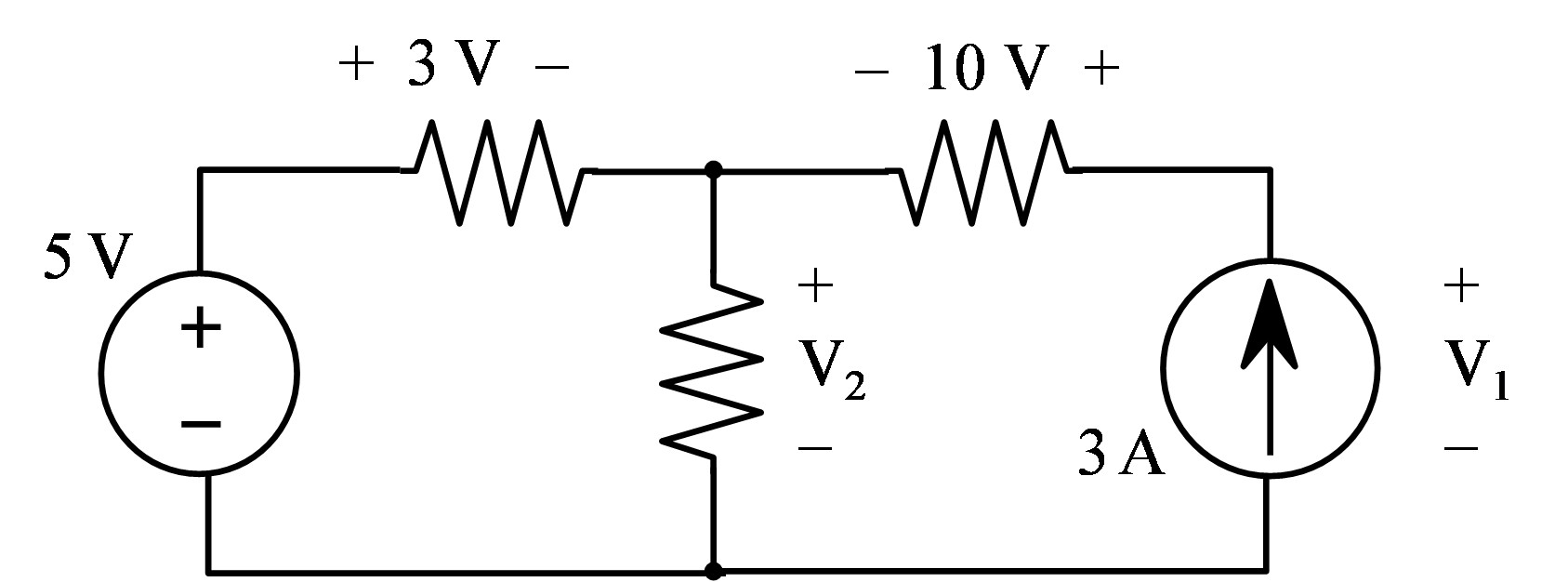
- In the circuits below, the directions of current and polarities
of voltage have already been defined. Find the actual values of the currents
and voltages using those sign conventions.(Rizzoni 2.18)
- In the circuit below, determine which components are supplying
power and which are dissipating power. Also determine the total
power supplied or dissipated. (Rizzoni 2.25)
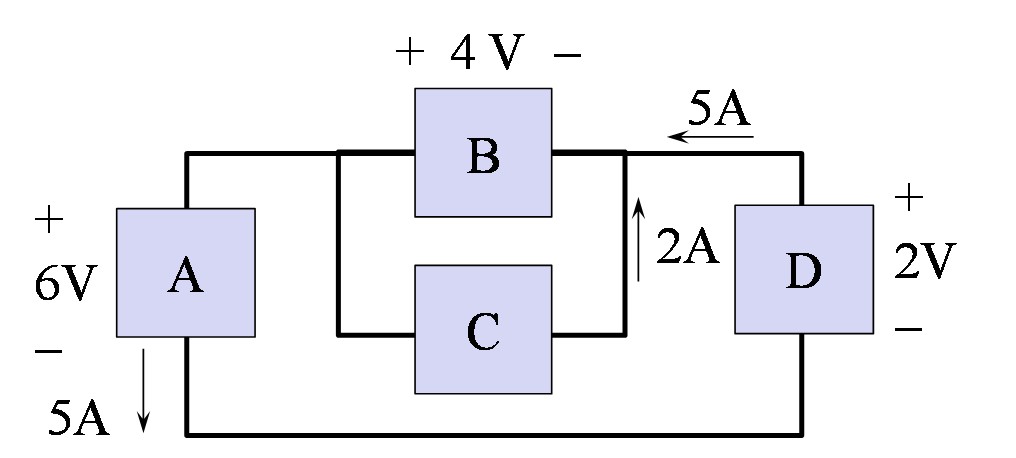
- An incandescent lightbulb rated at 40 W will dissipate 40 W as
heat and light when connected across a 120-V ideal voltage source.
A 60-W bulb will dissipate 60 W when connected across the same source.
If the bulbs are connected in series across the same source, determine the
power that each of the two bulbs will dissipate. Assume that the change in
resistance of light-bulb(s) filaments as a function of temperature is negligible.
(Rizzoni 2.35)
- For the following circuit, find (a) the value of the current
I, (b) the value of the voltage across each resistor, and (c)
the power absorbed or produced in each element.
| Vs
| R1 | R2
|
| 12 Volts | 180 Ω | 220 Ω
|
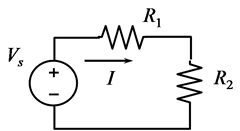
- Find the value of the current I flowing into the node.

- Suppose that the cost of electrical energy is $0.12 per kilowatt
hour and that your electric bill for 30 days is $60 (power usage only,
not including other charges or taxes) Assume that the power delivered
is constant over the entire 30 days. What is the power in watts? If a
voltage of 120 V supplies this power, what current flows? Part of your
electrical load is a 60-W light that is on continuously. By what
percentage can your energy consumption be reduced by turning this
light off?
- A typical alkaline 9-V battery that costs $1.95 is capable of
delivering a current of 50 mA for a period of 10 hours. Determine the
cost of the energy delivered by this battery per kilowatt hour.
Compare to the $0.12 per kilowatt hour for energy purchased from
electric utilities in the United States.
- A typical lead acid storage battery has a mass of 30 kg.
Starting from a fully charged state, it can supply 5 A for 24 hours
with a terminal voltage of 12 V before it is discharged.
a. If the energy stored in the fully charged battery is used
to lift the battery with 100-percent efficiency, what height is
attained? Assume that the acceleration due to gravity is 9.8
m/s2 and us constant with height. b. If the stored
energy is used to accelerate the battery with 100-percent efficiency,
what velocity is attained? c. Gasoline contains about
4.5 × 107 J/kg. Compare this with the energy content
per unit mass for the fully charged battery.
Maintained by John
Loomis, last updated 8 September 2014




